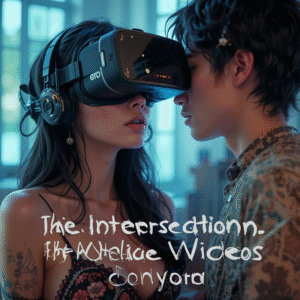Movie soundtracks have played a crucial role in the cinematic experience for decades. From the moment the opening credits roll, music can influence how we perceive a scene, evoke emotions, and even become synonymous with the films themselves. In this article, we’ll dive into how movie soundtracks have evolved over time, and how they continue to shape our movie-going experiences in 2025.
1. The Classical Origins: Music as a Narrative Tool
In the early days of cinema, silent films relied heavily on live music to enhance the emotional impact of scenes. Composers like Max Steiner (known for “King Kong”) and Erich Wolfgang Korngold (known for “The Adventures of Robin Hood”) introduced the concept of using music to tell a story. These early soundtracks were often orchestral, sweeping, and grand—designed to support the narrative and set the tone.
How It Shaped the Movie Experience:
In these films, music was used as a narrative device, helping audiences understand the emotions of the characters and the stakes of the story. It helped fill the void left by the absence of spoken dialogue.
2. The Rise of Original Scores: Iconic Themes and Music
The 1970s and 1980s saw the birth of some of the most iconic movie themes. Composers like John Williams (“Star Wars,” “Indiana Jones”) and Hans Zimmer (“The Dark Knight,” “Gladiator”) created memorable and instantly recognizable soundtracks that would become as important as the films themselves.
Williams’ “Star Wars” theme, for example, is one of the most recognizable musical compositions in film history. These original scores were meticulously crafted to suit the mood of each film, with recurring motifs that built emotional tension and provided continuity throughout a movie series.
How It Shaped the Movie Experience:
Music was no longer just an accompaniment—it became an integral part of the cinematic experience. These scores gave movies a sense of identity and emotional depth that audiences could connect with on a visceral level.
3. The Advent of Pop Songs and Music Licensing in the 1990s
In the 1990s, filmmakers began to experiment with the inclusion of popular music in movie soundtracks. Films like “Titanic” featured chart-topping songs (“My Heart Will Go On” by Celine Dion) that became inseparable from the movie itself. Other movies, like Quentin Tarantino’s “Pulp Fiction” and “Reservoir Dogs,” used carefully curated pop songs to add a layer of cool, rebellious energy to their films.
How It Shaped the Movie Experience:
Incorporating pop songs allowed the movie’s audience to instantly connect with the music on a personal level. The music also served as a cultural touchstone, adding a sense of time and place to the film.
4. The Digital Revolution: Electronic and Hybrid Scores
In the 2000s and 2010s, movie soundtracks began to evolve even further with the rise of digital technology. Composers started incorporating electronic and hybrid scores, blending orchestral elements with synthesizers, drum machines, and sound design. Films like “Tron: Legacy” (score by Daft Punk) and “Inception” (score by Hans Zimmer) showcased how electronic music could add a new dimension to storytelling.
How It Shaped the Movie Experience:
Digital and electronic soundtracks added an atmospheric quality to films, particularly in science fiction, fantasy, and action genres. The blend of electronic music with traditional orchestral arrangements created an immersive and intense audio experience for the audience.
5. 2025: A New Era of Dynamic Soundtracks
As we enter 2025, movie soundtracks are evolving to become even more dynamic and interactive. With the rise of immersive technologies like Dolby Atmos and 3D sound, filmmakers are experimenting with spatial audio to create more immersive experiences. Streaming platforms like Spotify and Apple Music are also offering personalized soundtracks based on your listening habits, allowing you to experience music in ways that were previously impossible.
In addition, there’s been a rise in independent composers who blend experimental sounds with traditional scoring techniques, giving the audience a completely fresh and unique experience.
How It Will Shape the Movie Experience:
In the future, we may see more personalized movie soundtracks where the music adapts to your preferences. Immersive audio technology could allow viewers to feel the soundtrack physically, enhancing their overall movie-watching experience.
6. The Impact of Soundtracks on Popular Culture
As we look ahead, it’s clear that movie soundtracks will continue to have a profound impact on popular culture. From the music in blockbuster films to the viral soundtracks of independent movies, music remains a key part of the cultural fabric.
How It Shaped the Movie Experience:
Soundtracks not only help shape our emotional responses to films but also have the power to shape the broader cultural landscape, influencing fashion, language, and social trends. Iconic soundtracks are often remembered long after the credits roll.
Conclusion
Movie soundtracks have come a long way from their humble beginnings, and their evolution has mirrored the advancement of film technology and the changing cultural landscape. In 2025, soundtracks are more important than ever, driving the emotional core of movies and creating an immersive experience for audiences. As we continue to move forward, it’s clear that music will remain one of the most powerful tools in shaping how we experience cinema.




